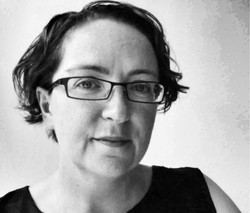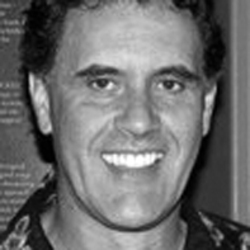Australian Theatre Forum 2013 | Wednesday (Before Lunch)
- June 1st, 2013
- Posted in ATF 2013
- Write comment

Australian Theatre Forum | Canberra Theatre Centre | Wednesday 27th May
The Australian Theatre Forum is THE theatre foyer of all theatre foyers. A huge milling massing mob, a swirling swilling symphony of conversations, bright bubbling people talking on telephones, kissing cheeks and giving knowing nods. In this foyer independent artists stand alongside Aritistic Directors, Festival programmers, performance artists, live artists and playwrights stand with Education officers, Directors, bloggers and venue managers – its a cacophany of charisma this foyer.
And not for the faint-hearted.
The forum’s curator Alicia Talbot is well-known in the theatre community (Yes I use the word “community” – a nod in the direction of Alison Croggon who takes exception at theatre being referred to as an “industry”… in days gone by I have grizzled at the word “sector” and so the best fit in my opinion for this wide-reaching, morphing, evolving, restless, multi-platform hydra-headed artform is “community”) through her work as Artistic Director of Urban Theatre Projects. Her bio speaks to the tone and the style of the forum’s program:
“Alicia Talbot is a Sydney based independent director and curator working in contemporary theatre and performance. Alicia has developed a practice of creating signature style works that have predominantly been site based and have tackled difficult emotional, social and artistic terrain.”
First up:
WELCOME TO COUNTRY AND THE CENTENARY OF CANBERRA: AGNES O’SHEA, ROBYN ARCHER

“Robyn Archer AO is a singer, writer, artistic director and public advocate of the arts. She is currently Creative Director of the Centenary of Canberra (2013), Artistic Director of The Light in Winter, (which she created for Federation Square, Melbourne). Her selected speeches are published under the title Detritus (UWA Press). She is patron of numerous arts organisations and has received many prestigious arts awards. She is an Officer of the Order of Australia, Chevalier de l’Ordre des Arts et des Lettres (France), Officer of the Crown (Belgium) and holds honorary doctorates from Flinders University (SA), and the Universities of Sydney and Canberra.”
Two elders: One of country and the other of our theatre community address us. Agnes welcoming us to her people’s land and explaining the common courtesy of the welcome, which identifies us as visitors to place – for the safety and wellbeing (physical and spirital) of us all. To say it this welcome ended with “you can leave your footprints here.” And I felt welcomed and honoured to be in Canberra and at the ATF.
And then Robyn Archer addressed us: she is the robust voiced champion of festivals and cabaret and innovative thinking (Yes I recently opened an exhibition on Subcultures at Casula Powerhouse Arts Centre called “Pigeon Auction” which I referenced her Platform paper “The Myth of the Mainstream” – her thinking and voice is nothing short of inspiring) – and her welcome to Canberra was a welcome to cut through assumption.
So, perhaps I should back up a bit and contextualise this a little – because, after all theatre, in and of itself, deals with three major concerns: time, place and audience.
TIME/PLACE/AUDIENCE: In September 2011 the Australian theatre Forum was at the Powerhouse in Brisbane. I was 31. I was a freelancing writer and director – and was asked to be the official blogger representing NSW. Now it is May 2013, I’m 33 and I am the assistant director of the Casula Powerhouse Arts Centre. (See how my sense of time is linked with work? Yes I’ve noted that – boring isn’t it?) In 2011 I was blogging very regularly (I’d taken a year off from practice to mend a broken heart – and no that didn’t really happen) in 2013 I blog infrequently after an anonymous death threat and a series of real-life trolls stopped me in my tracks.
But back to the ATF: Canberra in the middle of its centenary – splashes the slogan “Getting to know your capital again.” And that sentence in itself speaks of a disconnect. Interestingly Robyn Archer appeals to us now as she did then to re-view our perception of Canberra and see it as a significant repository of some of Australia’s cultural identifiers- Australian War Memorial, National Arboretum, National Film and Sound Archives, National Library of Australia, National Portrait Gallery http://canberra100.com.au/about/ and if anyone can sell the idea of arts and culture and National significance, its Robyn Archer. And she does. Beautifully. And of course she sang to us: it is my firm belief every morning should start with Robyn Archer singing to us: its a fortifying thing.
BUT what’s tricky about this idea about the “nation’s capital” and the respository of Australian cultural identifiers is our history.
Our current history. Our recent history.
It is no secret that the current Australian theatre “industry” is one which is fraught with identity crisis – because for the simple fact we have not come to terms with colonisation and genocide. We are not proud of our politicians and leaders. We are, I believe a nation which is ashamed and trying to constantly ignore our behaviours, our mistakes and the fractures that exist between peoples in our country.
The invitation from Robyn to re-discover and to have a new and fresh view of Canberra – is a call for healing and to be in the hear and now to stop and examine who we are, now in an historical context.
And it’s a great invitation.
Canberra is a testament to creativity – a city invented and designed and planned. At least at the start, but as things, people, places often do: they change with the needs of people… Some cities have had a couple of hundred years to develop their unique flavour, Canberra has has 100…
And there we are – from all around Australia converging on the nations captital. Creative people in a creative space.
And it is thrilling just to be in the same room after only existing online or in rumour – or on the occasional tour or festival. But not all of us are here: some of us are in rehearsal, at desks, working other jobs, on stages, presenting works… and I am mindful of that and what that means to not have a mass of independent artists, critics/arts commentators (or even actors) in the room – but we do, as we must, adapt and find alternative ways to communicate.
OPENING KEYNOTE: LENORE MANDERSON AND KRISTIN ALFORD | REHEARSING THE FUTURE – ANTI-FRAGILITY AND RISK AVERSION
“Contributing scientists to the Australian Academy of Science’s Australia 2050 report, Lenore and Krstin begin their discussion with the question: “Do we even have a future?””

“Kristin Alford is the founding director of Bridge8, helping organisations and individuals to discover new utilising foresight and strategy frameworks. Prior to establishing Bridge8, Kristin developed a broad career in engineering, human resources and product development across sectors including mining, R&D, aviation, agriculture and nanotechnology. Kristin holds a PhD in process engineering and a Masters of Management in Strategic Foresight. She is a graduate of the Australian Institute of Company Directors and a Fellow of the Governor’s Leadership Foundation. She was recently a member of the Australian Government’s Expert Forum on Enabling Technologies and served on the board of the Australian Network for Art and Technology from 2007-2012. She is the licensee and organiser of TEDxAdelaide.”

Lenore Manderson is internationally renowned as a medical anthropologist, social historian and public health researcher and educator. She has played a lead role in training in Australia, Asia and Africa, and has conducted research extensively in inequality, social exclusion and marginality, gender and sexuality in Australia and internationally. Her most recent book is Surface Tensions.
Read more here: lenoremanderson.com/about
In a curatorial stroke -Alicia Talbot’s program is all about provocations and this tone-setter was of huge tone setting.
Two highly intelligent, powerful speakers primed to have a conversation around the topic of “risk.”
And it was risky to have two speakers in conversation –
And here are some key points I publicly noted on Twitter:
PROVOCATION FROM LENORE: “If Theatre is the rehearsal of possibilities – how does that change or inspire what you are doing?”
KRISTIN: When asked what the future looks like – say in 2035 most people’s responses are fairly ordinary in their imaginings.
LENORE: Future thinking: the sci-fi dystopia is probably a dystopia because we have no future thinking – we are just reacting to the now.
LENORE: What does risk mean when we are all so completely bound by our self/ contexts (bodies, voices, skin-coloured microphones included)
LENORE: There is no future thinking in the pattern of grant writing
And they are right: It’s true “risk adverse” systems rule the world & that’s ok with me. Artists need these risk adverse systems to help us define what risk is. I sometimes think being polite is risky behaviour because you risk nipping in the bud an unwieldy and ugly consequence. I also see compassion as “punk” or alternative… especially when caring is considered creepy. I think risk is personal – we all have different limits and different things we are risking: the most boring of all discussion around “risks” to me is the “risk of money.” The most stressful and interesting of risk is “risk of identity” and “risk of reputation.” (And Jane Howard, James Waites and countless other bloggers and critics and reviewers I keep company with know all too well the points at which you risk reputation)
KEYNOTE: DAVID MILROY

“David Milroy was the first Artistic Director of Yirra Yaakin Aboriginal Theatre and in 2002 received a Myer Award for his contribution to the development of Indigenous theatre. David was a guest Director of the American Playwrights Conference in 2002 and has attended the Australian National Playwrights Conference on a number of occasions as a writer and Director. David received the 2004 Patrick White Award and the 2005 Equity Guild Award for his play Windmill Baby and a Deadly Award for his music in Windmill Baby. David was also a finalist in the Helpmann Awards and received two Equity Guild Awards in 2011 or his play Waltzing the Wilarra. David is currently writing his new play Crowbones and Carnivores and is chairperson of the Palyku Native Title Working Party in the East Pilbara.”
As a first point of call I refer you to Jane Howard’s excellent long-form blog
From the very moment he welcomed us: Milroy was ready to subvert the usual and expected: “Please remember to turn your mobile phones on when you leave the room…”
The bulk of the address was about collaborations with indigenous artists – about the significance and importance of the ownership and agency within telling aboriginal stories, aboriginal representation in stories.
Some key comments from David Milroy:
I’ve had been approached by many who sent me plays which include the sentence I’ve written this aboriginal story: To their credit they took rejection well.
If aboriginal people were 97.5% of the population would be be telling the others’ stories?
It’s not good enough to get the protocol document from the Australia Council and tick the boxes.
We have been a very studied prodded race of people
How do you know the significance & the meaning of the things for aboriginal people unless you ask?
Culture runs deep in this country… be mindful of this when you write about the colonial past.
Humility and respect are essential in the collaboration with indigenous people
There is no such thing as a generic Aboriginal person, we all come from somewhere
If you really want to empower aboriginal artists – work with them on their terms
When people want to put an aboriginal character in – they do it in a generic way: they’re not tied to country. It’s creepy.
It’s important that we have an authentic voice. It’s about facing yourself and being honest about it.
The tweet stream was alive with excitement at his address:
Lyn Wallis @DirectorTheatre 29 May
Fantastic keynote from David Milroy and very lively post-discussion. Indigenous artists must tell their own stories. #ATF2013
Bryce Ives @bryceives 29 May
Isn’t it awesome to sit in a multilayered discussion – there would be few conferences where you’d hear this level of discussion #ATF2013
Simon Hinton @theatrehinton 29 May
David Milroy’s wonderful, warm provocation teaches us the power of humour and generosity when communicating about difficult things #ATF2013
Aaron Beach @MrAaronBeach 29 May
@DavidWilliamsv2 @tahnif @brennahobson this is the best discussion I’ve been part of for a long time #historic #important #atf2013
And the feeling in the room was of pure possibility – a REAL conversation about meaningful engagement and collaboration – it was the most exciting conversation that could be had.